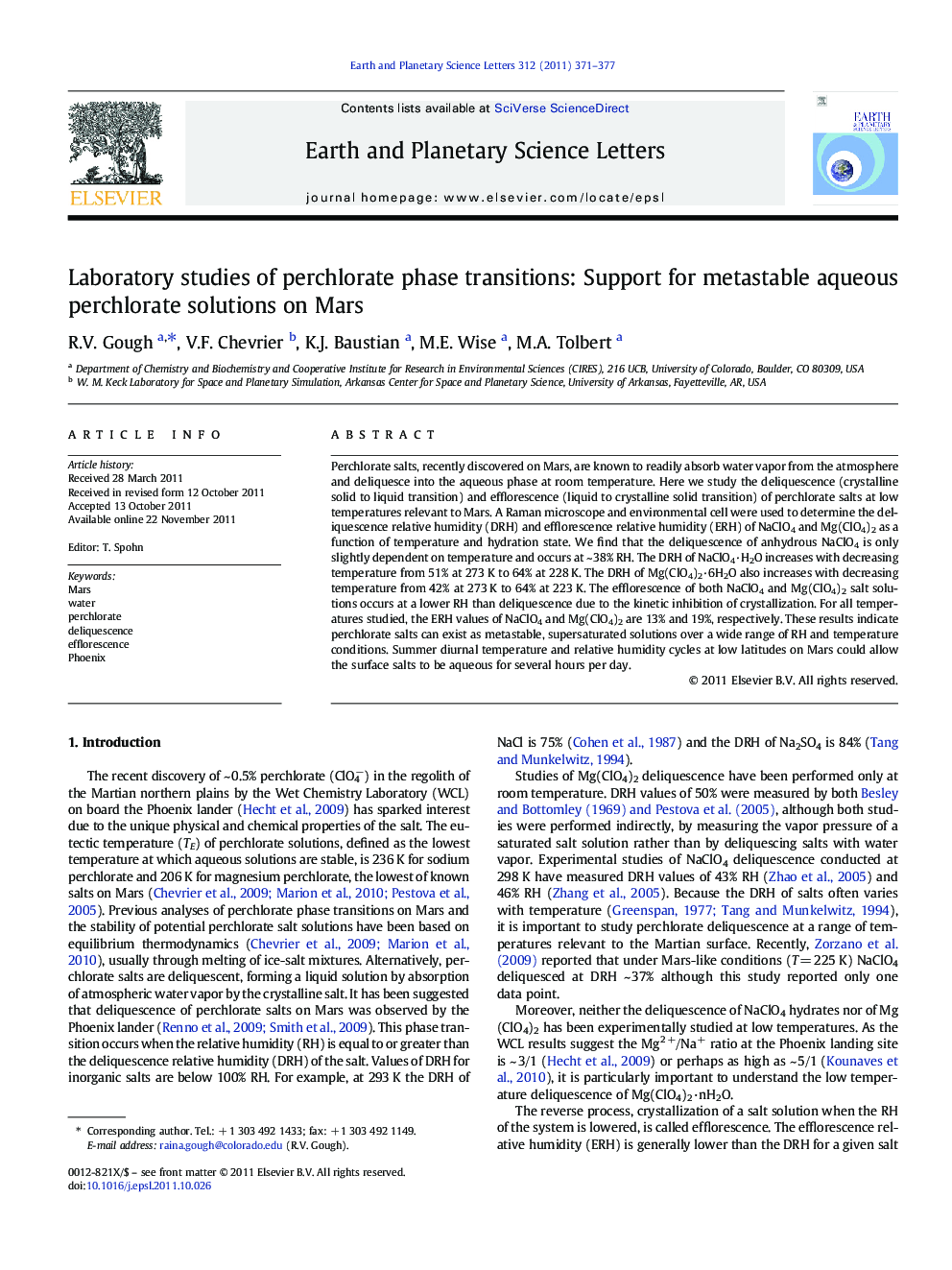| Article ID | Journal | Published Year | Pages | File Type |
|---|---|---|---|---|
| 4677708 | Earth and Planetary Science Letters | 2011 | 7 Pages |
Perchlorate salts, recently discovered on Mars, are known to readily absorb water vapor from the atmosphere and deliquesce into the aqueous phase at room temperature. Here we study the deliquescence (crystalline solid to liquid transition) and efflorescence (liquid to crystalline solid transition) of perchlorate salts at low temperatures relevant to Mars. A Raman microscope and environmental cell were used to determine the deliquescence relative humidity (DRH) and efflorescence relative humidity (ERH) of NaClO4 and Mg(ClO4)2 as a function of temperature and hydration state. We find that the deliquescence of anhydrous NaClO4 is only slightly dependent on temperature and occurs at ~ 38% RH. The DRH of NaClO4·H2O increases with decreasing temperature from 51% at 273 K to 64% at 228 K. The DRH of Mg(ClO4)2·6H2O also increases with decreasing temperature from 42% at 273 K to 64% at 223 K. The efflorescence of both NaClO4 and Mg(ClO4)2 salt solutions occurs at a lower RH than deliquescence due to the kinetic inhibition of crystallization. For all temperatures studied, the ERH values of NaClO4 and Mg(ClO4)2 are 13% and 19%, respectively. These results indicate perchlorate salts can exist as metastable, supersaturated solutions over a wide range of RH and temperature conditions. Summer diurnal temperature and relative humidity cycles at low latitudes on Mars could allow the surface salts to be aqueous for several hours per day.
► Low temperature lab experiments measured perchlorate deliquescence and efflorescence. ► Deliquescence RH is as low as 38% but depends on cation and hydration state. ► Efflorescence occurs at lower RH due to kinetic effects causing supersaturation. ► Metastable perchlorate solutions could exist on current-day Mars.
